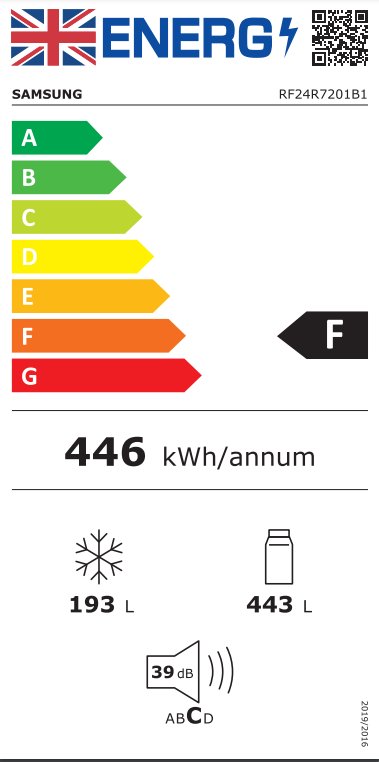Kitchen Appliance Energy Ratings
In today's environmentally conscious world, energy efficiency has become a key consideration in every aspect of our lives, including the appliances we use in our homes. In the UK, kitchen appliances play a significant role in our daily routines, and understanding their energy ratings is crucial for making informed choices that benefit both the environment and our wallets.
Energy Labels and Ratings:
The European Union introduced energy labels to help consumers make informed decisions about the energy efficiency of appliances. While the United Kingdom has officially left the EU, the energy labels and ratings system still applies. In the case of kitchen appliances, the most common labels include ratings for refrigerators, washing machines, dishwashers, ovens, and more.
The labels typically display a scale from A to G, with A being the most energy-efficient and G being the least. Over time, as technology advances and energy efficiency standards increase, labels have been updated to include additional categories such as A+, A++, and even A+++ for top-performing appliances. Therefore, consumers are encouraged to choose appliances with higher-rated labels to reduce energy consumption and environmental impact.
Understanding the Labels:
-
Refrigerators: Refrigerators are a staple in every kitchen. When shopping for a new one, pay attention to the energy label, taking note of the annual energy consumption in kilowatt-hours (kWh) and the overall efficiency rating. Modern refrigerators often come with innovative features like inverter compressors and improved insulation, contributing to their higher energy efficiency.
-
Washing Machines: Laundry appliances, especially washing machines, can be significant energy consumers. Look for labels that provide information on water and energy consumption per cycle. Front-loading machines generally have better energy ratings compared to top-loading counterparts. Choosing a washing machine with a high energy efficiency rating can result in considerable long-term savings.
-
Dishwashers: Dishwashers have also seen improvements in energy efficiency. Labels for dishwashers provide information on water consumption, energy consumption, and drying efficiency. Opting for models with advanced features like sensor technology and efficient water usage can lead to reduced environmental impact.
-
Ovens: Ovens come in various types, including traditional ovens, convection ovens, and microwave ovens. Energy labels for ovens often consider factors such as energy consumption, cooking efficiency, and size. Smart ovens with programmable features can optimize cooking times, contributing to energy savings.
Government Initiatives and Incentives:
The UK government actively promotes energy efficiency and sustainable living. Various schemes, such as the Energy Savings Trust, provide valuable information and resources to help consumers choose energy-efficient appliances. Additionally, some appliances may qualify for incentives, rebates, or tax credits, encouraging individuals to invest in eco-friendly options.

